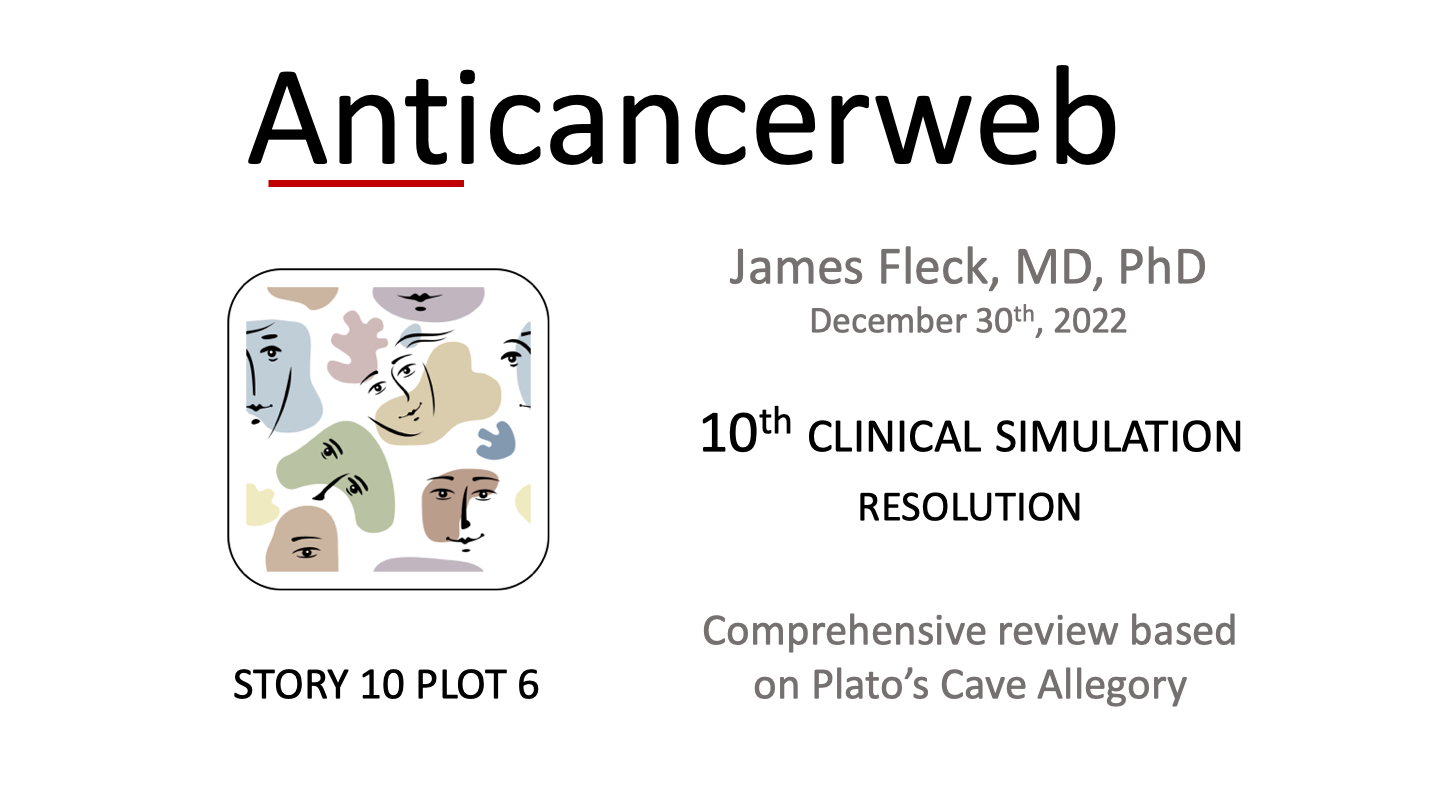
Plato's Allegory of the Cave | Resolution
Comprehensive clinical care for an elderly patient who remains still and silent
(Fictional narrative by the doctor)
James Fleck, MD, PhD: Anticancerweb 30 (12), 2022
Arthur suffered from a childhood fantasy. He was alone with his father when he had an acute episode of bloody sputum and died. But, before death, his father asked him to hide the information from the family. He agreed and felt guilty. He never brought it up again. It was kept as a secret in the unconscious of his childish mind. When Arthur fell ill, he took on the same attitude as his father. Ironically, the first clinical manifestation of Arthur's illness was bleeding in the stool. Regardless of a different anatomical location, this caused an identification with the father's tragic death. The inappropriate association of ideas reinforced the child's fantasy, keeping Arthur in regressive behavior. Arthur had entered into Plato's Allegory of the Cave, remaining chained to the fantasy his entire life. The regressive behavior led to a silent and immobile attitude. Arthur was unable to communicate the illness to his family. Arthur was convinced that death would be inevitable.
The doctor had to take a centripetal approach, working with the family on how to reach the patient. Fantasy and past guilt blocked Arthur's interactive behavior. Exploring family dynamics opened a line of communication with the patient, taking him out of immobility. Arthur resumed his critical vision, leaving Plato's Allegory of the Cave. Fortunately, unlike the allegory of the cave, Arthur has had previous contact with the real world. In mature life, he always demonstrated rationality in personal and professional relationships. He successfully exited the cave, based on his bonds with his son, who helped him repress his childhood fantasy. Arthur became a survivor of his own fantasies. After leaving the cave, Arthur regained his self-confidence and interacted positively with the doctor in planning his treatment and recovery. It was a complex situation, involving multiple professional interfaces and different procedures, but Arthur successfully mastered a well-informed shared decision-making.
* Attention: The story 10 was published sequentially from PLOT 1 to PLOT 6 and you will always see the most recent posting. To read Story 10 from the beginning, just click in the numbered links located at the bottom of the homepage.
© Copyright Anticancerweb 2022
James Fleck, MD, PhD: Full Professor of Clinical Oncology at the Federal University of Rio Grande do Sul, RS, Brazil

You have to break the taboo about illness and getting sick. Such events are part of life. You have to educate to avoid getting sick and talk to treat. There is no other method. Human beings fear the unknown. We fear the internal or external unknown. The only way to overcome this fear is by talking and getting to know them.
Please login to write your comment.
If you do not have an account at Anticancerweb Portal, register now.